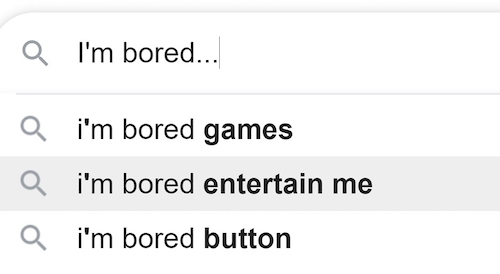ADHD and procrastination strategies

 We all procrastinate. We all find excuses to put off long, complex or boring tasks. For those with ADHD, the consequences of procrastination can be significant. We asked specialist Dr. Carol Weitzman, Director of the Connecticut Center for Developmental Pediatrics in Westport Connecticut and the Medical Director of the CT ADHD Center, and a Professor Emeritus of Pediatrics at Yale School of Medicine, to shed some light on the link between procrastination and ADHD.
We all procrastinate. We all find excuses to put off long, complex or boring tasks. For those with ADHD, the consequences of procrastination can be significant. We asked specialist Dr. Carol Weitzman, Director of the Connecticut Center for Developmental Pediatrics in Westport Connecticut and the Medical Director of the CT ADHD Center, and a Professor Emeritus of Pediatrics at Yale School of Medicine, to shed some light on the link between procrastination and ADHD.
What is procrastination?
Procrastination is the delaying or postponing of the beginning or completion of tasks. This can happen even when the person knows that the consequences of this will lead to unpleasant or negative consequences.
Is procrastination a sign of ADHD?
Nearly everyone procrastinates at times, particularly for very difficult or uninteresting tasks. Approximately 20% of people are chronic procrastinators – there are many people without ADHD who procrastinate.
However, people with ADHD who lack critical executive functioning skills (the ability to memorize and retain information) are more likely to procrastinate. Several studies have indicated a relationship between ADHD and procrastination.
How is procrastination different between people with and without ADHD?
There are many reasons why people may procrastinate. The reasons can range from a fear of failure, perfectionism, feelings of depression, task aversion and executive functioning deficits. Deficits in executive functioning are the most common reason why people with ADHD have difficulty with procrastination. To complete a task, especially one that needs to be done over time, such as a long report or project, there are many skills that are needed to do this that revolve around these executive functions. These might include:
- Future thinking and planning – the ability to look ahead and make plans to meet one’s goals both in school/ work and social life
- Managing one’s time – for example, estimating how much each step in a task or project will realistically take, and not overestimating our ability to do something at the last minute or underestimating how much time it will take to complete a portion of work.
- Organization of materials – for example, preparing for a mathematics exam, a person would need to prepare a number of materials and remember to bring a calculator, ruler, pencil, eraser etc.
- Getting started – having difficulties starting long tasks in the first place; finding reasons or excuses not to start a task.
- Not getting side-tracked and distracted by other tasks or stimuli that may be more interesting
- Not remembering the long-term goals and interim steps that need to be taken to complete the task.
- Lack of flexible thinking that may be needed to revise and reshape work plans and to move between planning and action phases of project work.
Over time, people with ADHD develop habits of waiting until the last minute, over-investing in their ability to do this well, believing that they work better under pressure and lose their motivation when projects do not go well.
It is important to remember that many, if not most people, resist big projects that are not highly motivating. For example, if someone likes building things and plans to build a gazebo, often they have no trouble getting started as this is fun and something you want to do. Contrast this with writing a long report on a topic of limited interest, or for adults, doing their taxes or writing year-end reports, etc. For people with ADHD, who have often experienced failure and lack critical skills to accomplish these tasks, it is often difficult to find and sustain motivation.
What are the impacts of procrastination for people with ADHD?
The impacts can be enormous and include poor school or job performance, poor self-esteem and sense of competency, problems between kids and their parents, missed opportunities, and mental health problems like depression, anxiety and stress.
Can a person’s environment affect how much they procrastinate (e.g. home versus school or office)?
Yes, completely. The amount of distraction in a setting can contribute considerably to the ability to maintain focus on work. Establishing a work environment that is distraction free (or reduced) is critical to building strong and effective work habits.
Second, within those settings, it’s important to examine how that environment promotes or impedes productivity. Is the work environment cluttered and a source of distraction? Does the space need to be re-organized? Does it need cues to maintain motivation like pictures of people, inspiring quotes, etc.?
Effective strategies for managing procrastination
It’s important to break down our approach to managing procrastination – this can apply to anyone, not just those with ADHD. The six areas below aim to tackle procrastination at its root.
1. Getting started
Developing realistic goals – the person needs to define what would be good about completing this project. They should ask themselves:
- What would it feel like I was successful?
- What do I need to meet this goal?
Asking these types of questions can help reduce the resistance to the task and can help to visualize why doing this work may be valuable.
Examining tasks that may look overwhelming, tedious, difficult, etc. – breaking them down to reduce that feeling of having a ‘mountain to climb’. This is about taking the first step. It is important to not worry if a there is not a high level of motivation at the beginning and not too wait for that to get started. That often comes after some success has been made.
2. Planning projects
This is a big part of the work (and often underestimated in people with ADHD). At the start of any big project it’s important to start breaking things down into each and every step and write them down. It is about the prioritization and organization of tasks. This can be done by:
Doing a check to make sure these steps are achievable and actionable
Estimating the time for each step and thinking about what may go wrong at each step and how that will be overcome.
Creating deadlines and writing them down.
Scheduling time to do this work on a calendar.
Keeping this calendar visible and checking it daily.
3. Creating effective workspaces
Workspaces can be improved by removing excess clutter from a desk or workplace and by creating a calm, relaxing space to work.
4. Monitoring progress
Progress can be measured by monitoring each task to get an overall picture. This can be done by:
Reviewing progress regularly and assess how well you are meeting goals
Updating the project calendar at least a few times/ week
Having flexibility between planning, monitoring and doing and effective
problem solving. Routinely asking:
- Have the goals changed?
- Are they where they need to be according to the plan?
- If not, what is getting in the way?
- Do they need help completing any of the steps or tasks?
- Who can best help them?
5. Maintaining motivation
Maintaining motivation to complete a task can often be the most challenging aspect of procrastination. To keep up levels of motivation, one should establish realistic rewards for accomplishing each goal and meeting a deadline.
It’s also a good idea to start rotating between tasks that may be of higher or lower interest, scheduling breaks and monitoring how easy or difficult it is to return to work. For children, it can be beneficial to reward them for their efforts in developing executive functioning skills (such as remembering to put something in a calendar or scheduling work time).
6. Be kind to yourself
One does not need to achieve perfection out of the gate and putting in the effort is perhaps the most important thing. If people are kind to themselves, they can start to reduce automatic negative thoughts and maintain confidence and motivation when tackling tasks.
This helps to cultivate a growth mindset. Believing that putting in effort and time will lead to growth and feeling smart and seeing mistakes as opportunities to learn. It’s about moving away from being right toward improving and learning.
Learn about our objective ADHD tests.
Disclaimer: the information contained on this website does not constitute medical advice. If you have concerns about your own health or the health of someone else, you should speak to your doctor.
